Dear Friends,
The faint but rhythmic thumping was unmistakable. I laid awake in bed on my back, eyes open and unfocused on the ceiling in the faint light from a setting crescent moon, Caryl breathing the deep respiration of sound sleep. It had to be around 2AM.
I halted my own breathing to hear it better. Yes. Dull thump. Two second pause. Then again, a dull, faintly audible thump. I had heard it before in the barn, and in the shop. And now, it was in my house. They were inescapably closing in. My life was governed by packrats.
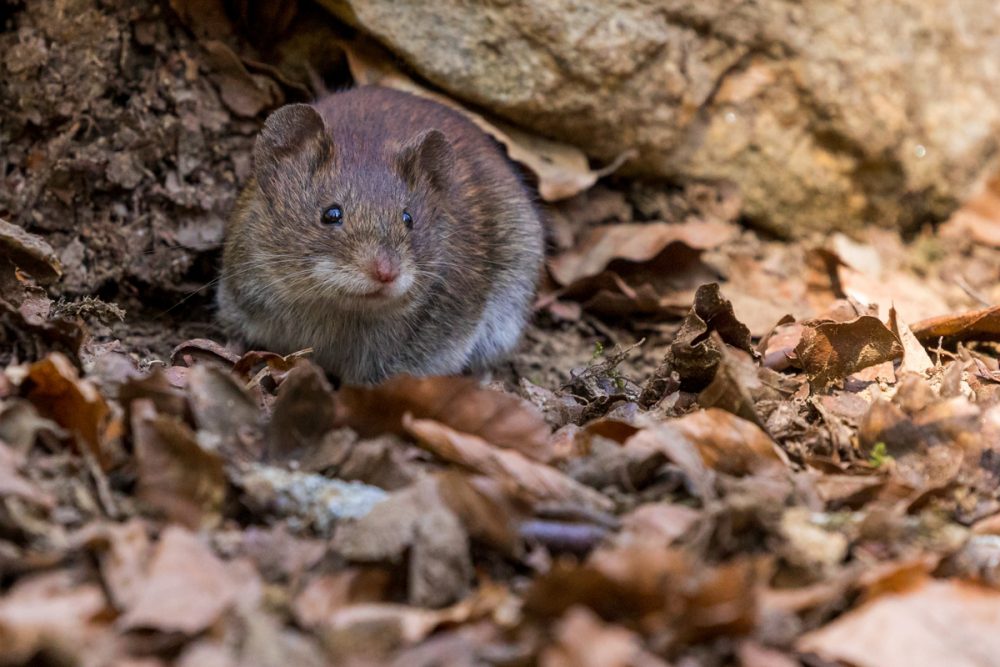
These rats, also known as bushy-tailed woodrats, are native to the low and mid elevation foothill mountain habitats we live in. They occupy cliff crevices, caves, tree root openings and rock outcrops all over the West. They enjoy gathering various trinkets from all over their habitats and building massive nests, also known as middens. Often packrats have been observed with a unique trading behavior, where they will stop, inspect an object such as a pine cone on the way back with another item, such as an animal bone, and actually place the animal bone on the ground next to pine cone and continue on their merry way with their new-found (for a reason only packrat knows) treasure to their midden.
I’ve poked around many middens myself, not because of a strong desire to do so, but because of more than a little anger. You may call it rage. Nearly every vehicle we own has been subjected to adoption of a potential midden area by the enterprising rodent. I’ll pop the hood of my latest used pickup truck addition to check oil and find a wide-eyed blinking in the sudden bright light very cute squirrel-like gray rodent staring back at me with bug-like eyes.
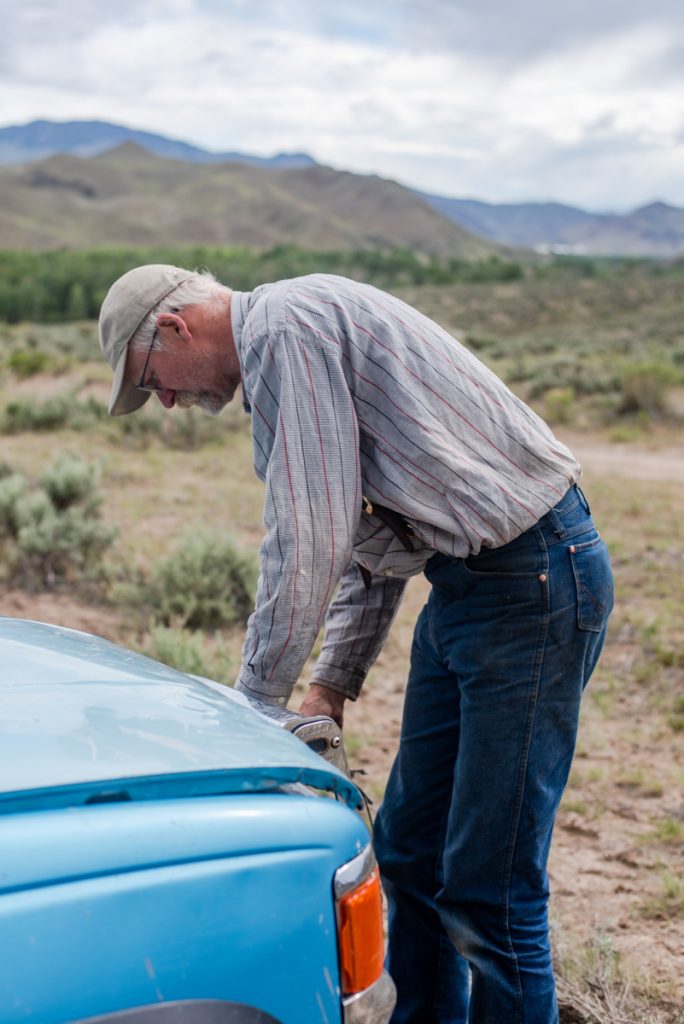
And then, he or she will disappear into the bowel depths of engine compartment, long tail with fuzzy ball on end chasing them. These aren’t your basic ugly simply slimy Templeton type sewage rats. These are lovely looking cuddly rodents with long, gray and well-groomed hair. Certainly, the upper crust of rodent-class. You expect them to perhaps sport a little Britisher classy tweed sport coat and perhaps a flat short bill wool hat.
And judging by the paraphernalia I find conveniently under the hood along the likes of spark-plug wires and fuel injectors (or even worse, inside the air-intake of said pickup truck), they are certainly upper-crust in collectibles as well. Their abode is festooned with the likes of shiny bolts, screws, plastic bottle caps, pieces of glass and electric fence insulators, along the with the usual pieces of dried animal excrement, cured grasses, and tree bark.
This I begin heaving out of the pickup engine compartment in a sort of raging ferocity. I often find expletives falling out of my mouth during these times because almost invariably, said rodent has also taken it upon himself to chew electrical lines, fuel lines or other critical systems parts or conveyances that render said new-to-us pickup not only non-starting but then non-driving.
I’ve had to tow packrat chewed vehicles to town (60 miles one way) to Jeff’s mechanic shop on more than one occasion. Not a happy drive, I might add, despite the wonderful scenery on the way there.
The culprits wisely make off with a great escape, and despite live traps (we drop them off up in the wild country miles away from human habitation) or 22 caliber rifles for repeat offenders, we always have more, soon under another hood.
And as you would expect, they are prolific. A female can whelp (do rats do that?) several litters of 6 or more rat-lets at a time.
And single cute bushy-tailed woodrat can become a living nightmare.
‘Why do they thump?’ I wondered. I had no idea. Research has no apparent answers. For me, it was some kind of water-drop torture. And it was the worst kind, because I knew rodent knew no bounds; they had set up house with me for the first time while we lived in the aging ranch house.
I silently crawled out of bed, grabbing flashlight from nightstand, wearing nigh but skivvies, and made my barefoot way toward the thump. It was in the chest of drawers. My wife’s chest of drawers.
The organic and putrid stench of pack rat urine caught my nostril. Argh. Trying to ascertain which drawer it would be, I felt like I stood in front of Bob Barker on the Price is Right. “Door number one, two or three? Actually, Truth or Consequences would be more appropriate. Indeed there would be grave consequence if I didn’t find him. Marital bliss and harmony would conceptually end that night. If indeed I caught him, I would achieve husband rock star status forever, I thought (wrongly).
Fact is, I didn’t even have a plan. I didn’t know yet what I would do if I found the little prowler. I figured I had to terminate him, otherwise, he would be back. With relatives. And toxic packrat odor that has caused some people to willfully decide to burn their former abodes to the ground (it is very difficult to remove, and in fact, we did end up doing just that to this old ranch house full of black mold and packrat odor).
I pulled open top drawer, and thumping stopped. Nothing—now moving fast. Second drawer. Underwear. And two blinking, marble-black eyes staring back a the bright light. And packrat, with distant tail bob following flying through the air like a flying squirrel, heading for bathroom.
And there, in the sterile tiled no hiding place zone, he met his match with broom after an incredible life and death struggle with a tall and skinny underwear man who did manage to slip on hip waders for this unthinkable wee hours of the morning battle of wits. It wasn’t easy, but my just beyond toddler kids were sleeping in the very next room.
Unthinkable to allow escape. Truth lived that night. And the consequence was not mine. It was my house, after all.
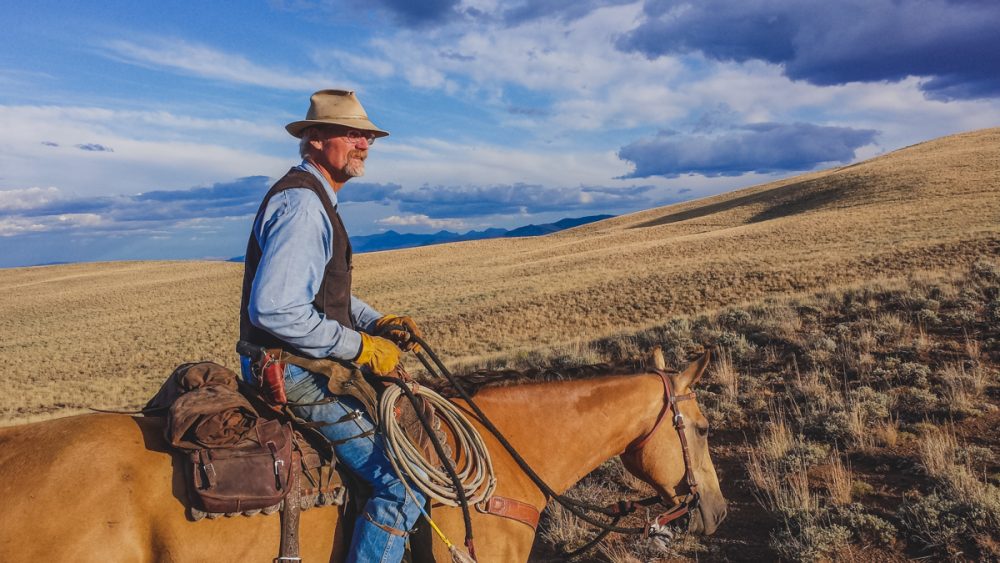
I’m on my saddle horse, and her name is Ginger. She and I are sweet on each other, but we do have moments where our minds aren’t quite on the same track. This wasn’t one of those days. We were both in the same spot. Hot, tired and parched.
There was no water. We trotted the single-track dusty trail down Pig Creek. Why we called it that, I have no idea, because the only creek that ran down the steep and narrow canyon was flash floods. And there were no pigs. Lizards, scorpion and rattlesnake alone liked the hot canyon, and when the sun reached zenith in July, as it was while we rode, my guess is that temps soared over 110 degrees fahrenheit. We stopped for a few seconds to catch breath. I looked back where we rode. Dust hung in the air, as if suspended by the rising heat. Maybe it was, as further up, the canyon walls shimmered in the mirage effect when desert heat meets light and air.
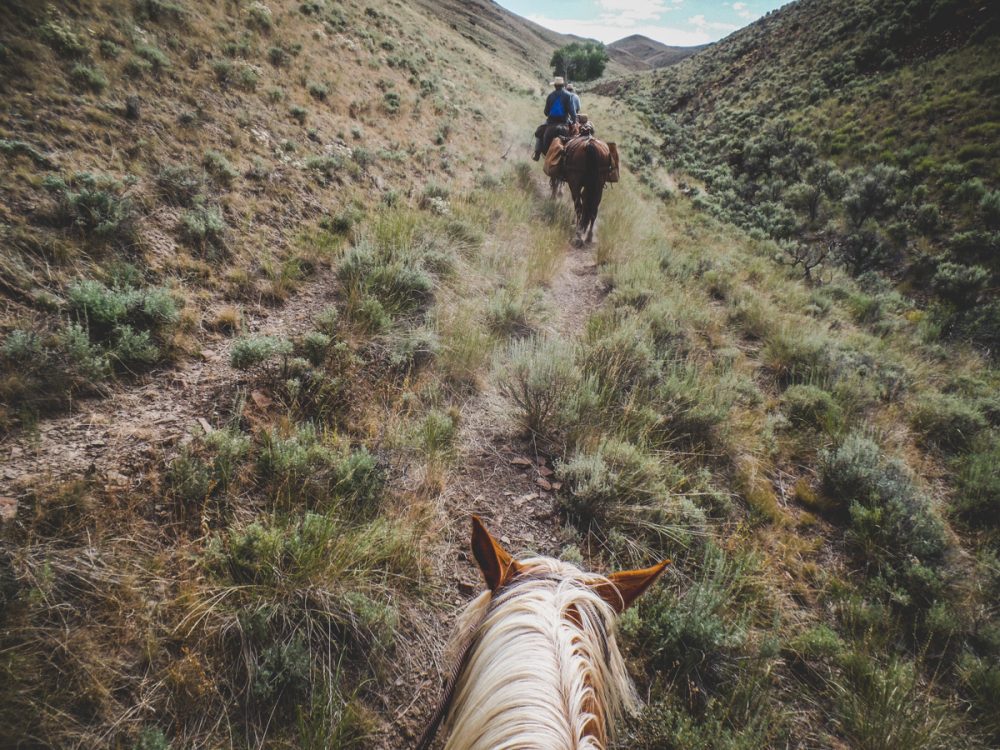
Horse and rider both glanced up to the rocks at the sound of a pebble dropping from a small cave in the volcanic sculpture of cliff. Packrat.
I couldn’t see the resident, but a noted the house. It was easily identified by the slick of whitened matrix of urine and feces emanating from the crack-like hole. And in the crack was stuffed a fair brush-pile of rocks, sticks, grass and debris. Compared to the short-term flophouses constructed under my pickup hoods, this was an MGM Grand hotel.
And I knew there was much more than a hotel involved. The nest, or midden, was an example of what had turned out to be some of the most accurate climatological and paleo-botanical record datasets in the world. Carbon-14 dating has ascertained that many of these middens have been in use for as much as 40,000 years. The very thing that causes humans to have gag reflex—the urine, also happens to form a matrix inducing compound, called amberat that preserves and curates everything from the woodrat’s own DNA to plant parts still preserved from locally extinct species.
Many Great Basin (Southern Idaho, Utah, Nevada, Eastern Oregon) middens actually have in them cone and seed parts from spruce and fir trees, species now locally missing from the current plant list. Evidently, they were common enough for the packrat’s ancestors to harvest. These two trees, for example indicate much cooler climes. Found in low canyons like Pig, where desert plants abound, these plant parts point to the cold temperatures typical of ice age retreats. Pig Creek, the hot oven that I knew, was home to glaciers, subarctic and tundra plants, and the high boreal forest that typified the arboreal margin of such cold landscapes.
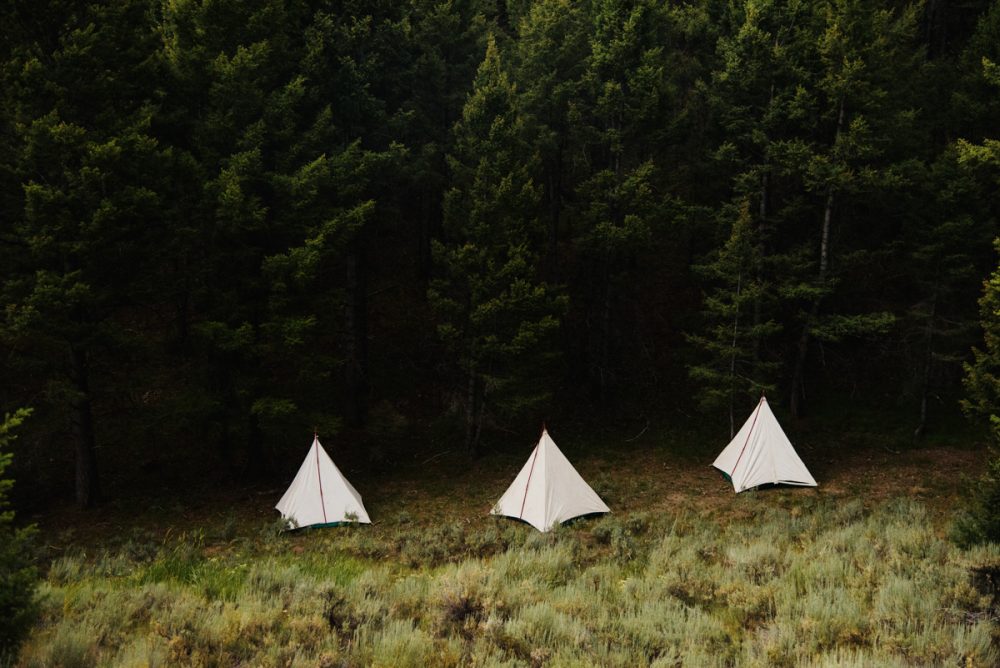
And packrat survived them all.
And so, our fuzzy rodent friend now shares land with rattlesnake, scorpion, and lizard instead of wolverine, wooly mammoth, and arctic fox. I hope we, as humans, can prove that adaptable. I smiled at the quite appropriate domicile of furry friend. Live on, rodent warrior!
Happy Trails.
-Glenn
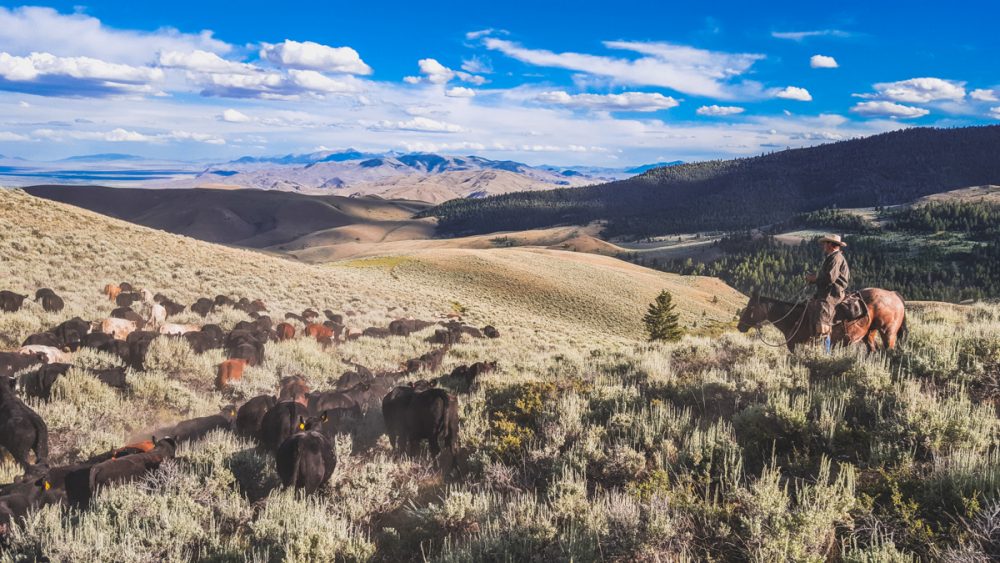





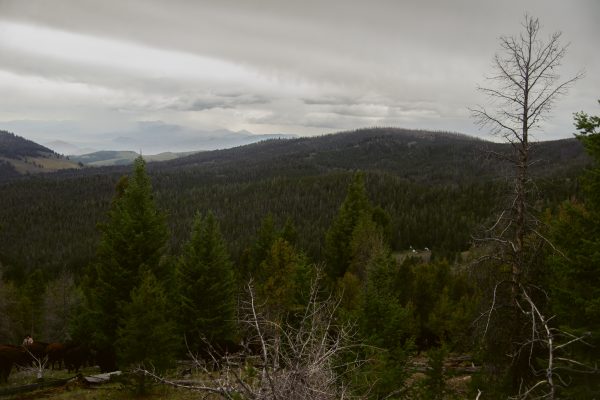
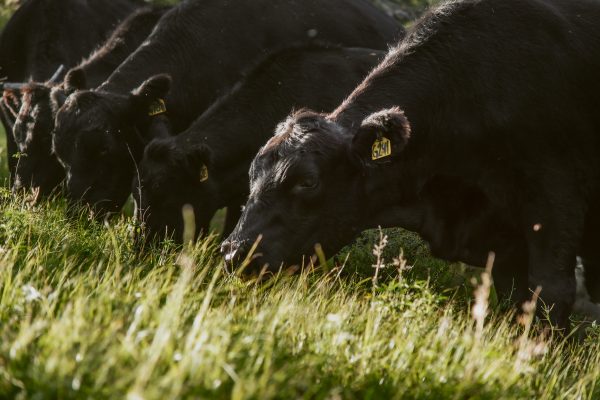
Cindy Salo
Packrats sure cause moral conundrums. It’s their adorable Micky Mouse ears that get me. And the way they amble out of a live trap, enjoying the new view, when you move them. My morals are fine with the cat catching them, but I wish she wouldn’t leave the less tasty bits on the door mat.
You’ll probably get lots of free advice on keeping packrats out of vehicle engines; I’ll start. I put the hood up every night I’m in pack rat county. A friend wraps the wires in 2″-wide aluminum tape. “Not the kind with insulation, just with a sticky back.†He says hoses don’t need to be wrapped, but your mileage may vary. His pro tip: “I find it easiest to tear off 4-6″ of tape and wrap that much, then another 4-6â€.†I haven’t tried aluminum tape.
Glenn A. Elzinga
Cindy!
I have the tape. I just bought it! Thankfully, my rat detectors have not found any new occupancies! I almost miss the little devils…
Thanks for the advice!
Glenn
Jesse
I find it so comforting to know I’m not alone in the battle to rid my RIM sleep of the ever recognizable thump and clanking of wood rats. If they’d only stick to the woods and not leave the black oozing mess along surfaces that hands frequent…